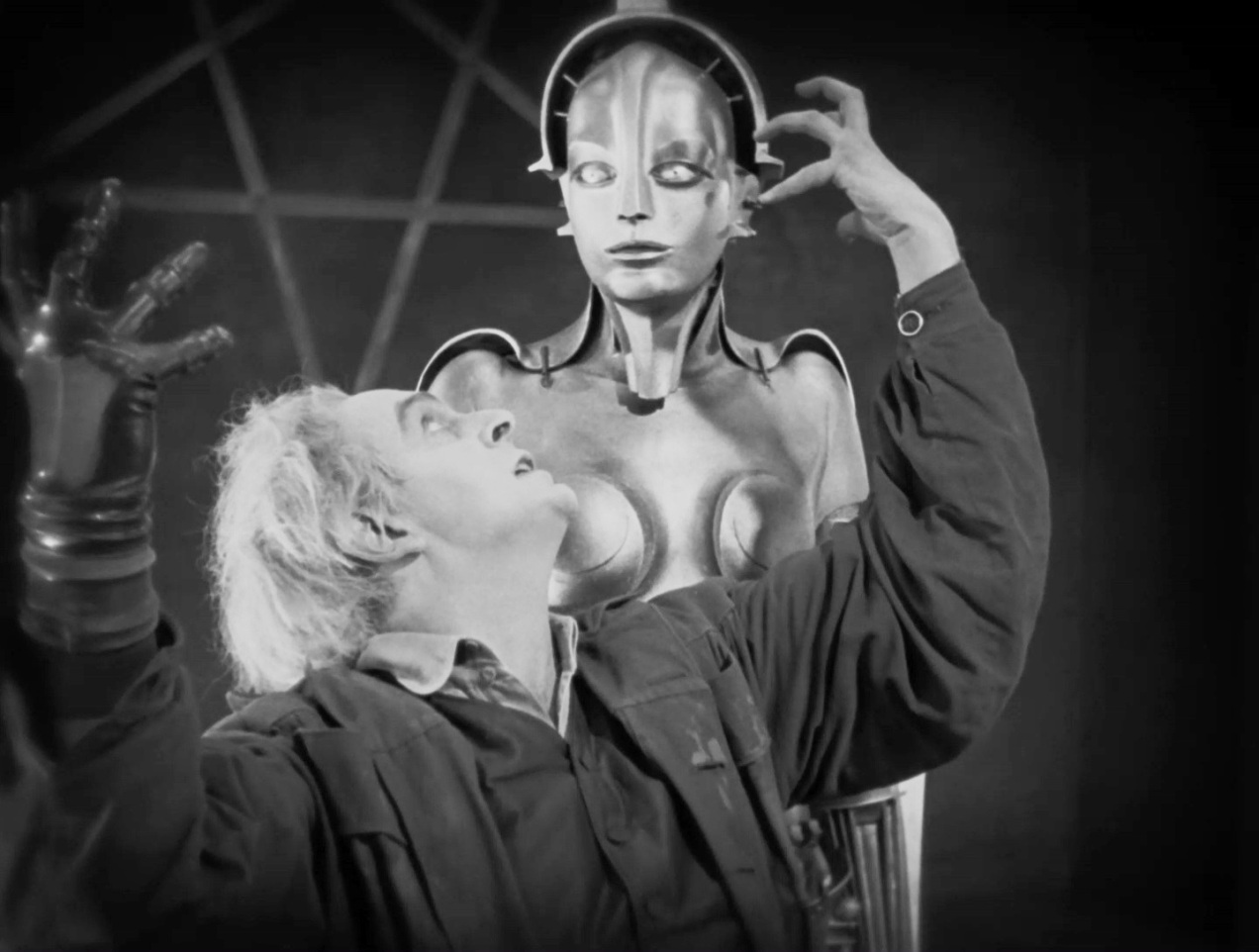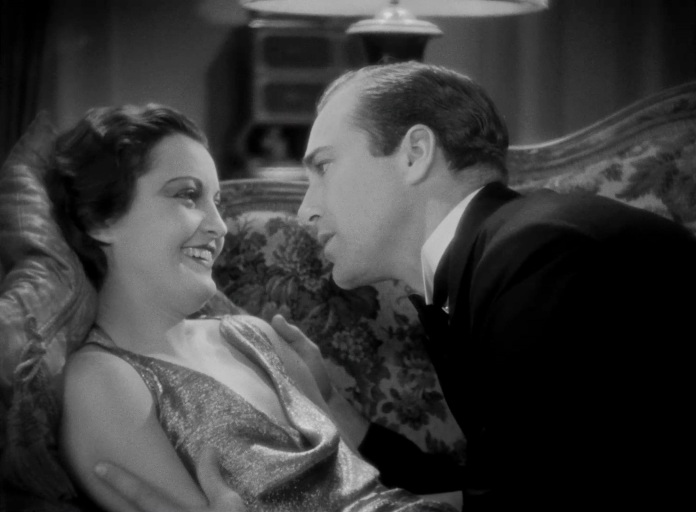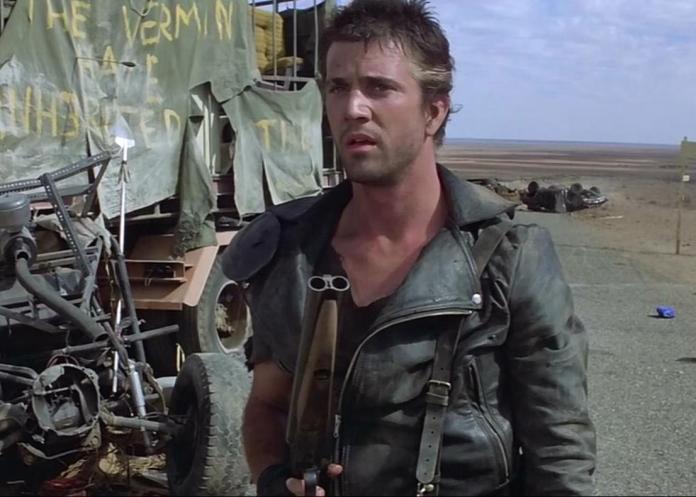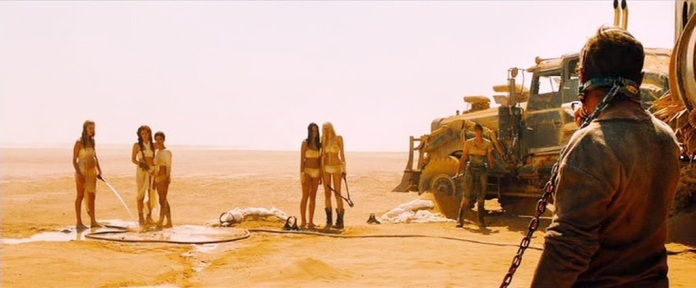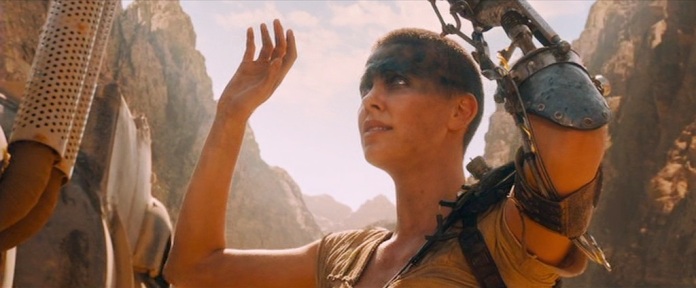.

Director: Paul Leni
By Roderick Heath
Paul Leni’s name might not be as instantly recognisable to movie lovers as his fellows in the legendary days of German “Expressionist” cinema, Fritz Lang and F.W. Murnau. Nonetheless, Leni stands with them as one of the major creative figures of that style, of the budding horror film genre, and of the great mature phase of silent cinema in general. Leni beat both directors to the punch in emigrating to Hollywood in the mid-1920s, where he did vital work fusing the concerted visual effects of the UFA approach with the steady, rhythmically intense storytelling motifs of Hollywood, and so perhaps had the most immediate impact on a generation of directors emerging at the time, including Josef von Sternberg, John Ford, and Sergei Eisenstein. Like Murnau, he would die tragically young and at the peak of his talents, in his case from blood poisoning resulting from an abscessed tooth, a sad and ridiculous fate somehow in keeping with the tenor of Leni’s ripely morbid works. Leni’s initial work in cinema came as a set designer and decorator, a vocation he had learnt in the theatres of Berlin, and soon plied for directors including Joe May and E. A. Dupont. He continued to provide art direction for other filmmakers even after he made his debut as director, Dr Hart’s Diary (1917). Leni’s true calling card was however to be Waxworks, one of the near-mythical works springing from the king tide of Expressionism in German film.

Following Lang’s Der Muede Tod (1921), Waxworks similarly offers an early take on the anthology film, composed of short, distinct but stylistically and thematically related stories. His screenwriter on the project was Henrik Galeen, who penned several Expressionist classics including Paul Wegener’s Der Golem, wie er in die Welt kam (1920) and Murnau’s Nosferatu, Eine Symphonie des Grauens (1922). Waxworks commences with a young poet, played by William Dieterle, later to become a significant director himself, invited to visit a waxworks show that travels with a carnival that’s rolled into town: the carnival is popular but the waxworks is ignored. The poet speaks to the manager of the show (John Gottowt) and his daughter Eva (Olga Belajeff), and learns they want someone to write entertaining stories to lend mythos to the major figures in the show, which are Harun-Al-Raschid, the Caliph of Baghdad who featured in Arabian Nights, Ivan the Terrible, and Jack the Ripper, who is conflated here with Spring-Heeled Jack, the supernatural wayfarer who supposedly terrorised London in the late eighteenth century. The poet readily takes up the exhibitors’ offer, and even quickly and amusedly amends a proposed tale when the owner accidentally breaks a limb off the Harun figure; thus the poet begins to tell the story of how the Caliph lost his arm. Leni then begins to illustrate the poet’s historical fantasia, with Harun personified as a corpulent autocrat, played by Emil Jannings. Harun plays chess with his Grand Vizier on a terrace of his castle, only to be disturbed when a cloud of black smoke begins to spoil the day’s splendour. Angry because he was losing the match, Harun sends his Vizier out to track down whoever is making the smoke and execute them. The source of the pollution proves to be the chimney of a baker (Dieterle again), who is married to the most beautiful woman in Baghdad, Maimune (Belajeff again). Delighted with the glimpse he catches of her as she flirts with her husband and then him from her vantage, the Vizier forgets his vicious duty and instead returns to tell the Caliph of this desirable jewel.

The Cabinet of Dr Caligari (1919), immortal as the founding work of the film Expressionist style, had a cunning metafictional device to frame it, as the protagonists in the central drama of mesmerism and murder were revealed to be lunatics in an asylum, reconfigured into actors in a psychotic’s fantasy. By comparison, Waxwork’s frame has a lighter, humorous quality, as the poet’s fancies are devices for flirting with Eva. Except that Waxworks’ chapters essentially tell the same story over in variances, becoming increasingly direct and intensified in figuring the lovers and the deadly threat. Woven in with this is an equal and increasingly nervous contemplation of the individual vulnerable in the face of ravening power, couched first social and political terms, in Harun and Ivan, and then in the lurking, miasmic pure dread of Jack the Ripper. This first episode offers the theme in a mildly comedic manner, as Harun and the baker make expeditions to claim what the other one has: Harun wants the baker’s wife and the baker, trying to appease her stoked desire for worldly rewards, decides to break into the palace and steal Harun’s wish-granting magic ring. The Vizier’s visit has stoked awareness in both baker and bride of their lowly, straitened circumstances, and their festering resentments break out afterwards, with the baker stomping out on his vainglorious mission with the declaration, “I am a man!” This talismanic phrase recurs with more specific force in Leni’s later film, The Man Who Laughs, but its implicit declaration of the innate rights and stature of the individual echoes throughout Waxworks. It’s not hard to look for its relevance to real-world circumstances at the time – Germany was deep in the grip of the post-war reparations-induced economic crisis. Murnau’s The Last Laugh the same year tackled, again with Jannings, the same theme of desperation and dehumanisation through fiscal crisis.

In the first chapter, this battle resolves comically after Leni intercuts Harun’s surprisingly clumsy, self-satisfied efforts to seduce Eva, with her husband’s adventures. He steals into the palace and penetrates the shadowy, cavernous reaches of his bedchamber, locating what he thinks is the Caliph but is actually a dummy he leaves in his bed when he goes out on such nocturnal adventures. Believing the dummy is the real Caliph, the baker slices off the figure’s arm and flees, dodging guards and finally escaping the palace with a daring leap onto a palm tree that swings him over the battlement. He returns to his home, as his wife hurriedly hides the Caliph in the only secret place available – the oven. The baker’s venture to steal a fake version of the seemingly mystical jewel proves just as vainglorious as the Caliph’s seduction, and it’s left to Maimune to conjure a fittingly advantageous end for all concerned as she pretends to use the stolen jewel to wish the Caliph to appear alive, whereupon he crawls out of the oven, covered in soot but saved from profound embarrassment, and to repay the favour he appoints the baker the official baker to the palace, leaving off with a final image of the Caliph embracing both partners, cheekily redolent of a ménage-a-trois in the offing.

This chapter of Waxworks somewhat belies the film’s reputation as a classic specifically of horror cinema, instead signalling a link between the performative professionalism and flimflammer art of the carnival and the stage pantomime, as well as reaching back to the portmanteau storytelling tradition as represented by the Arabian Nights itself, as well as the labours of Germanic anthologists like Hoffmann and the Grimm brothers. This sense of Waxworks as a cultural bridging point is important in itself. The major “characters” of the waxworks are introduced with the actors who embody them noted at the same time, reducing the great historical figures and the big stars to rigid figures, powerless without poets to animate them. Meanwhile the narrative performs a similar function, turning these real beings into functions of a private mythological and psychological universe. The stylisation of the settings, the quintessential flourish of the Expressionist style, aims not for realism but for a brand of minimalist, almost symbolic representation. Whereas with Dr Mabuse, The Gambler (1922) and Die Nibelungen (1924), Lang laboured to fuse together the dreamlike aspect of Expressionism’s already-familiar twisting reaches and heavy shadows with a three-dimensional sense of scale and stature, here Leni pushes in the opposite direction, reducing his setting and backdrop as close towards the insubstantial as he can without quite going entirely abstract.

The curving minarets and bowing walls of the palace, up which snakes the black spout of the baker’s inconvenient chimney. The awesome yet almost melting halls of the palace interior, where minions steal between warped columns and smoke and incense dreamily fill the corridors, is definitely a place of the mind, an inner sanctum of libidinous greed, whereas the baker’s home is almost a cave, curved and womb-like. The second chapter, shorter than the first, repeats the motif of the mighty, arbitrary ruler of life and death imposing himself on a pair of young lovers. This time, however, the theme is Ivan the Terrible, presented as a glowing-eyed lunatic stricken with a compulsive, almost childlike fascination for the horrors he can reap on just about anyone he pleases. Where Jannings’ bluff, hammy performance was suited for the take on Harun as corpulent, casually murderous but actually easily tamed potentate, this chapter offers Conrad Veidt as an unnervingly fixated, spindly-limbed emanation of the sickliest part of the id, glimpsed moving in a stiff crouch along a dank passage that connects his apartments with the Kremlin’s torture chambers.

This tale, shorter and sharper than its predecessor, strips the bark off the fantasy figuration of lust and power. Leni presents Ivan as a monster governed and, to a degree, held in check by an elaborate network of irrational devices. In particular, a giant hourglass is used to measure how long his victims will be tortured, their names written on the glass. When the sand runs out, so does their tenure on Earth. Ivan’s astrologer, his closest confidant, inspires suspicions in the tyrant’s mind over the loyalty of his head poison-mixer, and so Ivan decides to have him arrested. The poisoner, in turn, vengefully writes Ivan’s name on the hourglass before he’s arrested. Ivan’s dubious pleasures are interrupted with a boyar arrives, asking him to attend his daughter’s wedding. The paranoid Tsar at first takes the old man’s entreaty as a set-up to lure him into an assassination, but then agrees to be a guest, with one codicil: he insists that the boyar dress in his clothes, and vice versa. The Tsar’s instincts prove right, as a hidden gang of assassins tries to skewer him with an arrow as he rides through Moscow, but their bolt, aimed at the regally-dressed figure, kills the boyar instead. Ivan arrives at the boyar’s house and triumphantly announces his arrival, forgetting the detail that the bride’s father is dead. The bride (Belajeff) weeps over his body and her husband (Dieterle) releases a tirade of fury at the Tsar, for which he is instantly imprisoned and tortured. The Tsar also has the bride spirited to his chambers to seduce her. She strikes him with a crop instead, so he drags her down to witness her husband’s sufferings. His pleasure is however cut short as his astrologer brings him the hourglass marked with his name, believing it means the poisoner successfully dosed the Tsar fatally. Ivan spirals into complete insanity as he thinks he’s dying, and he keeps turning the hourglass over, believing this will stay the moment of his death. A title card explains he kept doing this until the day he died.

Here the insistent correlation of the eroticised id with a will to worldly power becomes more distinctly maniacal and driving, whilst the watch-like parts of the story tick on with swift, precise effect. This chapter of Waxworks seems to have had an almost endless influence on many who have followed, most especially Eisenstein, who clearly drew upon it for his similarly arch take on the Tsar in Ivan the Terrible Parts I (1944) and II (1958), reproducing the angular sets and equally angular performances. Leni himself would build upon it with The Man Who Laughs, and Sternberg would draw on both, surely, for his own visit to the realm of the historical fantasia, The Scarlet Empress (1934).

The last chapter of Waxworks is very short, almost an appendix, but it’s also the most bizarre and remarkable sequence. Here the poet imagines he and Eva are being stalked around the carnival and town by Jack the Ripper, who seems to disappear like a phantom and reappear, and even manifests in many places at once, as the world becomes increasingly strange and distorted. Finally the poet is shaken awake by Eva: he’s been having a nightmare, and he gratefully embraces his new lover. Here Leni slips all bonds of narrative precept and essentially offers a visualised nightmare, a plunge into a formless state of irrationality, where the poet’s invented enemies and rivals for Eva’s affections void all forms to become a blank, implacable engine of erotic threat. Here is both the seed for the image of the slasher killer who would later maraud his way across many a movie screen in the next century, a psychological conception of threat stripped out of all zone of actual human interest – Leatherface, Michael Myers and Jason Voorhees are distant descendants. But Leni’s flourishes of style here also veer into virtually experimental film style in his madly proliferating double exposures and increasingly formless sense of space, used to evoke the complete inward spiral of the psyche towards an ultimate confrontation with that dark character within. Here too is kinship with the lawless effects of filmmakers as diverse as Kenneth Anger, David Lynch, and Maya Deren.

Waxworks made Leni’s name, and within a couple of years he went to Hollywood on Carl Laemmle’s invitation. His sense of humour as well as style and menace might well have put in him good stead with Tinseltown, and his first American project was to film Crane Wilbur’s comedy-horror play The Cat and the Canary (1927). That film proved a big hit, laying down a template that would soon resolve into Universal’s house style of horror and offering fillips of style that still recur in horror films today, like its restless, entity-suggesting camerawork. Leni’s third Hollywood film, The Man Who Laughs, has a legendary lustre today, in part because of its pop cultural influence, particularly on that perennial enemy of Batman, The Joker. There’s an irony in there, as the eponymous hero of Leni’s film, adapted from the novel L’homme qui rit by Victor Hugo, couldn’t be more different to Bob Kane and Bill Finger’s enigmatic psychopath. Like Hugo’s other, more famous protagonists Quasimodo and Jean Valjean, The Man Who Laugh’s central figure Gwynplaine represents a politically abused but potentially powerful underclass, and like Quasimodo his exterior ugliness belies his fine, tortuously sensitive humanity. The film also reunited Leni with Veidt on new shores. The Man Who Laughs kicks off with a long prologue where, although the settings are more tangible and vivid, returns to the Ivan the Terrible episode of Waxworks as it depicts the English King James II (Samuel de Grasse) and his jester Barkilphedro (Brandon Hurst) descend from palace to dungeon at the news his soldiers have captured the rebellious Lord Clancharlie (Veidt). James gloats over Clancharlie for sadistic jollies as he informs him that, as a punishment in his father’s stead, his young son Gwynplaine has been handed over to a sect of gypsies known as comprachico, who specialise in creating deformed and disabled freaks for carnivals, with the instructions to carve his son’s face into a permanent grin, “to laugh forever at his fool father.”

The opening scenes of The Man Who Laughs are a remarkable string of images and settings. The statue-lined environs of James’ bedchamber. The jester’s malignant face looking out of a secret passage framed by carved monstrosities. The iron maiden closing around Lord Clancharlie as he prays for his son. The wind and snow-whipped shore where the comprachicos, sent into exile by James after they’ve done his gruesome bidding, flock onto a boat but abandon young Gwynplaine (Julius Molnar Jr) to the elements. The mutilated child gropes his way through a blizzard studded with hanged bodies dangling from gibbets, the harvest of James’ repressions. Gwynplaine comes across a woman, frozen to death but with her infant child still clutched to her breast. He saves the baby and brings her to the parked caravan of travelling actor Ursus (Cesare Gravina), who recognises that the baby is blind and demands of the boy, “Stop that laughing!” before he realises he cannot. Ursus takes both youngsters in and they make a living travelling between country fairs. By the time Gwynplaine (Veidt again) and the girl, named Dea (Mary Philbin), have grown into adults, Gwynplaine has gained fame, bordering on folk heroism, as a clown and entertainer. Along with a band of fellow players, he, Ursus, and Dea enact a play written by Ursus called “The Man Who Laughs.” But fate has a mean gag in store when they roll into Southwark Fair in London’s suburbs, a setting modelled after one of William Hogarth’s famously ebullient but also viciously satiric engravings. Here the comprachico surgeon who gave him his remarkable countenance, Dr Hardquanonne (George Siegmann), now living under a pseudonym, recognises his handiwork on Gwynplaine’s face, and writes a letter to the current holder of the Clancharlie estate, the Duchess Josiana (Olga Baclanova), a debauched aristocrat and illegitimate sister of the current ruler Queen Anne (Josephine Crowell). The message however is intercepted by Barkilphedro, now working for the court and visiting Josiana, and he alerts Anne to this strange and potentially propitious discovery: Josiana has been irritating Anne with her wilfully arrogant behaviour and wanton escapades, and a neat device of punishment is now open to her.

Le homme qui rit was written by Hugo when he was in exile from France for his harshly critical writings on the national authorities, and he wrote it to serve as much as an oddball political parable as a standard historical romance. Leni keeps intact both its nominal setting in English history but also its weird, Ruritanian aspect, using this just as Hugo did – as an excuse to indulge his weird fancies. Although the sorts of things they’re depicted as doing had been real practices in times much further past, the comprachicos were just the first of Hugo’s inventions. After the gruesome, outsized fairytale flourishes of the opening, The Man Who Laughs slowly resolves into something more like a melodrama, if one still laced with dimensions of perversity. Those dimensions resolve as Gwynplaine is tortured by Dea’s love for him, believing he has no right to impose someone of his grotesque stature on her, although she can’t see the affliction. He sees some hope, however, when Josiana visits the fair where he’s performing and, compelled by his strange appearance, invites him to her manor.

Gwynplaine, convincing himself that if someone can actually love him in spite of his deformity than he has the right to love Dea, accepts the invitation. He finds himself the object of a fetishist’s electric, potently erotic blend of repulsion and fascination, as Josiana rejoices in his hideousness, clearly turned on by it in a sick way that Gwynplaine correctly senses is merely the flipside of the more familiar horror and mockery he receives rather than a negation of it. But then Josiana receives a letter from the Queen, informing her that now Gwynplaine has been found, he will be restored to his rightful inheritance, and she will be obligated to marry him. Josiana’s rueful laughter, signalling awareness she’s about to nailed to this particular point of her character as her cross just as surely as Gwynplaine’s face is his, sends Gwynplaine running. This proves the catalyst for Gwynplaine finally allowing Dea to feel the nature of his disfigurement, a moment that resolves with Dea’s gorgeously corny line, “God took away my sight to see the real Gwynplaine!” Both Philbin and Baclanova featured in two other, quite different yet pertinent takes on the fundamental dichotomy presented here, as Philbin had previously played Christine in The Phantom of the Opera (1926), opposite Lon Chaney, and Baclanova would go on to again be the figure of taunting sensuality before the misshapen in Tod Browning’s Freaks (1932).

Even on the cusp of happiness, Gwynplaine can’t escape the peculiar trap that is identity: he’s arrested by royal soldiers and taken to prison, to be press-ganged into Anne’s plan for him. When Ursus follows him there, he mistakes a funeral procession for Hardquanonne, who had been captured and held there too, for Gwynplaine’s. Leni continues to stage remarkable sequences, as when the players pretend to be putting on a normal show to keep Dea from learning of his apparent death, and the lengthy finale in which Gwynplaine is presented to the House of Lords whilst Dea, realising he’s alive, gropes blindly to find her way to him. For all its facets of brilliance, however, The Man Who Laughs is peculiarly lumpy experience dramatically speaking, splitting the difference between gothic grandeur, sickly satire, and sentimental melodrama, before resolving in a manner fit for a Douglas Fairbanks swashbuckler. The hoary plot never quite builds to any sequences as memorable as those in The Hunchback of Notre Dame (which, interestingly, Waxworks star Dieterle would film in 1939), whilst the attempt to go for a crowd-pleasing tone in the final lap is underlined when Barkilphedro gets his comeuppance, his throat ripped out by Ursus’ loyal dog.

That such a mixture doesn’t entirely blend isn’t surprising, as Laemmle’s determination to repeat the success of The Phantom of the Opera saw a few too many cooks adding to the broth on the script level. But The Man Who Laughs packs a wallop regardless because of the fervour Leni and Veidt invest in it. Here was the perfect role for Veidt and the perfect mythology for Leni. Veidt’s appearance, a dental plate used to make his permanent smile-snarl seem all the more unnatural, offers a face turned into a kabuki mask, rigid and lunatic. And yet watching how Veidt sketches emotions around the edges of this offers a master class in expressive performing. Perhaps the high point of the film, at once hallucinatory and unsparing in its gaze, comes when Gwynplaine first appears on stage at one of his shows. The smile he turns on his audiences gains delirious power, sending the crowd into convulsions and bringing Josiana under the spell of a peculiar charisma, her fixation communicated in a series of superimpositions and dissolves, beautiful (but ugly) man and ugly (but beautiful) man bound together, a visual etude of awareness that one must exist to give meaning the other.

Gwynplaine’s hideousness sparks merriment, becomes a leer of mutual mockery, a telegraph to the common folk suggesting the dark side of the society they live in, and finally locating an accord with them, on the level of frail humanity, the embodiment of all absurdity. To see Gwynplaine is to have an existential crisis that can only be resolved in laughter, whilst the man himself experiences the sexual thrill of intense masochism being satisfied, and exultation in his rare fame. The vividness of Leni and Veidt’s realisation of this theme surely was to echo on through Universal’s subsequent horror films with their tragic antiheroes. As Gwynplaine eventually rises from the status of clown to lord, he manages the more important evolution, finally voiced when bellows with righteous fury at the stunned toffs and fatuous queen: “A king made me a clown! A queen made me a lord! But God made me a man!” It’s the climactic moment of the film and of the revealing thread of interest that runs through from Waxworks to this film, the depiction of brutal power: Gwynplaine’s declaration of the rights of man is every bit as totemic, and instantly punishable, as the baker and bridegroom’s invective against their tyrants and the evils forced by life in the earlier film.

Fortunately, Gwynplaine’s new status cuts a swathe through the stunned lords, giving him a brief window of escape before the Queen’s heavies move in, and he stages a successful flight across the rooftops of London. This sequence , as with the baker’s escape from the palace in Waxworks, reveals Leni’s gifts at the free rush of action as well in creating the tangled moods of psychic anxiety. In spite of the never-never setting of both films, or perhaps because of it, a genuine charge of palpable meaning emerges from such flourishes. Leni’s world is a place of wandering, rootless but free artists and yearning poets, twisted beings full of humanity, and monstrous forces of political and social power. But, most fundamentally, for both the poet and Gwynplaine, the man himself is his own enemy. Leni’s small but still vital oeuvre is charged with this sense of duality. The monster is stalking us; the monster is us.

